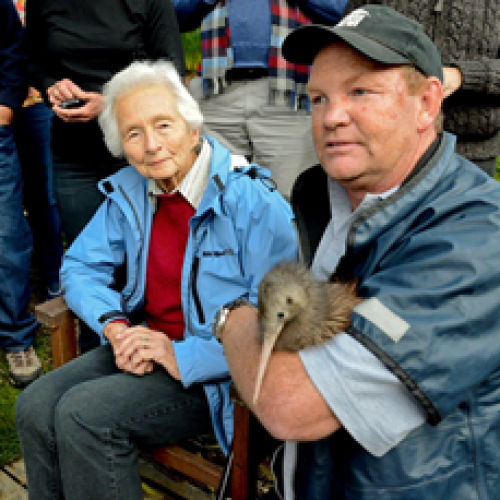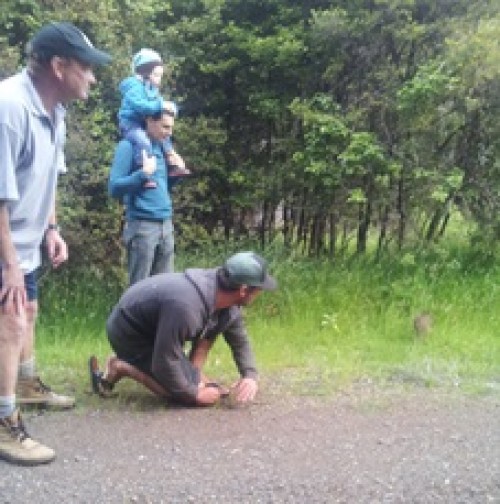Posted on 01st September, 2015

Mike Camm, Project Manager of the Tutukaka Landcare Coalition, said "It was a fantastic opportunity for local people to see live kiwi up close before they were released into the native scrub nearby. Our community have worked hard over the last decade to trap predators, keep dogs under control and make the area a safer place for kiwi. We hope these kiwi will live out the rest of their 50 year lifespans here."
Two kiwi were released – a female named Koru and a male named Ho. The kiwi were named by students from Glenbervie School. Prior to the release, the kiwi were also taken into the school to give the senior students the rare experience of seeing live kiwi up close and learn all about their unique characteristics.
Koru and Ho were hatched by their kiwi dads in the Whangarei Kiwi Sanctuary reserves near Purua, then taken as chicks to Matakohe-Limestone Island – a predator-free kiwi crèche in Whangarei Harbour. On the island the kiwi chicks roam safely until they reach a key weight of 1200 grams. At this size, kiwi can fight off most predators apart from large feral cats, ferrets and dogs, and can be returned to pest controlled areas. A special ceremony was held at the Onerahi Yacht Club to welcome Koru and Ho back to the mainland.
The two kiwi arrived at Tutukaka in the evening. Todd Hamilton, Project Manager for the Whangarei Heads Landcare Forum, gave an insightful talk about kiwi, what makes them so unique, and what we can all do to ensure they thrive.
"Scientific research has proven that 95% of kiwi chicks are killed by stoats before they reach one year old" said Todd. "However after establishing trapping networks to reduce stoat numbers, kiwi were still being found dead. It became obvious that dogs were killing significant numbers of adult kiwi in Northland. If we want kiwi in our backyards, we need to do both – trap out the stoats and encourage every landowner to tie up their dog at night and walk their dog on a lead. Now we know what to do, Northland brown kiwi can thrive. It's quite simple really!"
Todd was then joined by Pete Graham from the Department of Conservation. With a kiwi each, they walked through the crowd, giving people the opportunity to see live kiwi up close, and gain a deeper understanding of our truly remarkable national icon.
The event was hosted by the Bowden family at Tawapou Coastal Natives. Sandra Bowden remarked: "It was a truly amazing experience! I have never seen a real, live kiwi up close before and I will never forget it. I'm determined now, more than ever, that we must do all we can to look after these very special birds and ensure they can keep roaming in our backyard for years to come."
The Tutukaka kiwi release was funded by the Kiwi Coast and made possible by the hard work of the three community-led projects – Friends of Matakohe-Limestone Island, Backyard Kiwi and the Tutukaka Landcare Coalition.
The Kiwi Coast aims to support and link kiwi recovery projects in eastern Northland. It is the first pilot project of Reconnecting Northland which is being delivered by WWF-NZ and the NZ Landcare Trust, with funding from the Tindall Foundation, ASB Community Trust and HSCB Global Water Fund.
For more information visit www.kiwicoast.org.nz or contact ngaire@kiwicoast.org.nz

